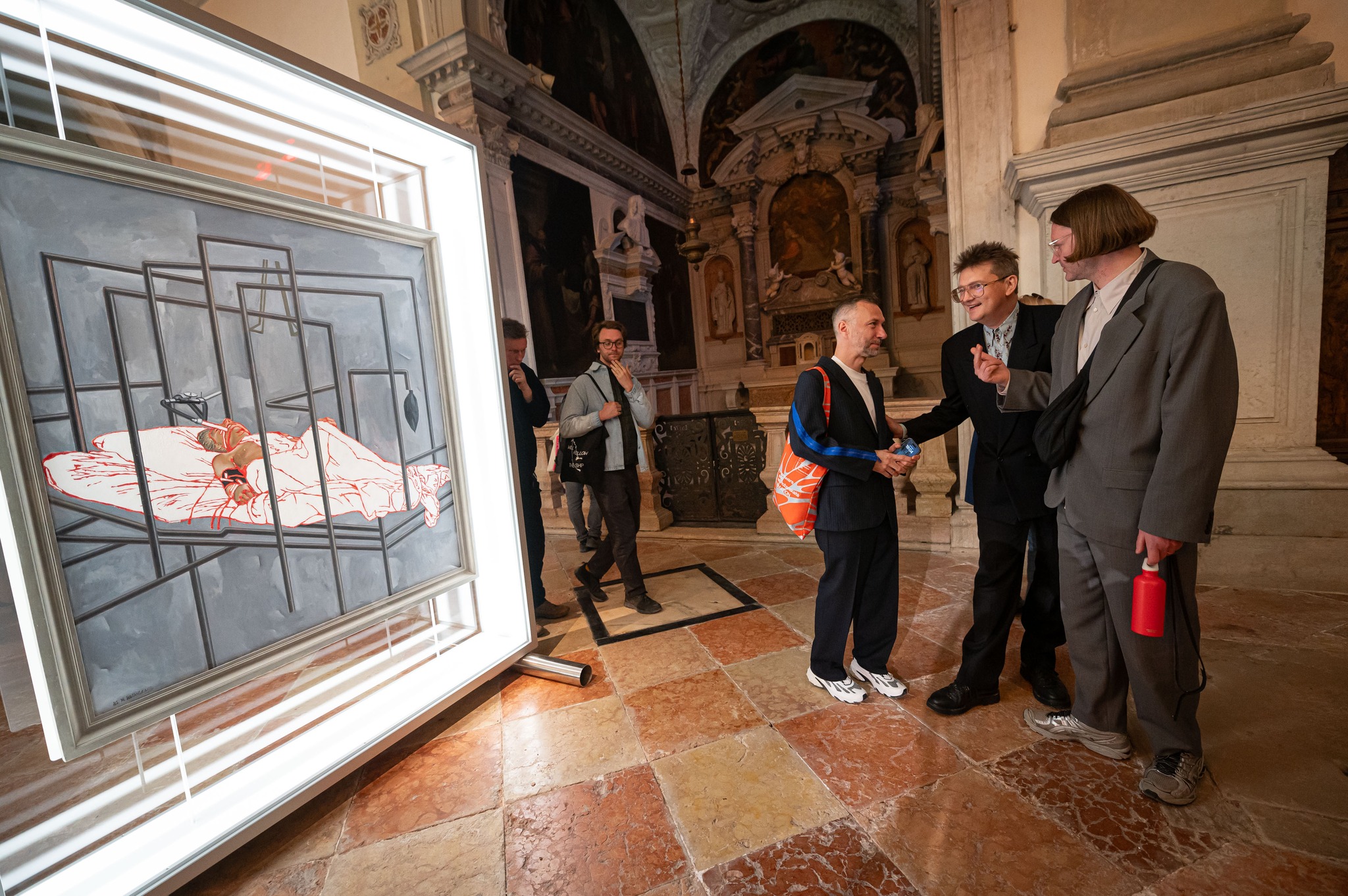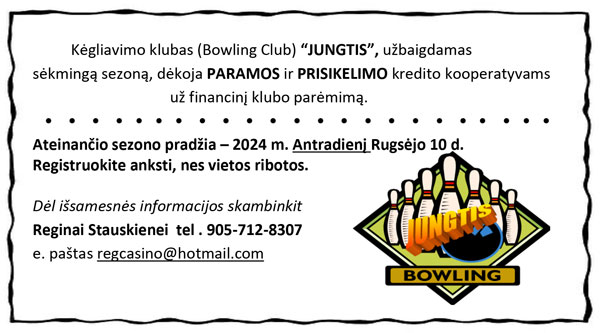
The Contemporary Art Biennial Festival in Venice has welcomed an exhibit called “Pakui Hardware” by Neringa Černiauskaitė and Ugnius Gelgudas, as well as “Inflammation” by Marija Teresė Rožanskaitė (1933–2007). Before the opening, influential cultural news feed Artnews added the Lithuanian pavilion, curated by Valentinas Klimašauskas and Joao Laia, to the top ten “Best Pavilions” list. German media giant Monopol put the Lithuanian pavilion in first place. Over the first few days of the Biennale, “Inflammation” attracted more than 10,000 visitors. The Lithuanian pavilion will be open for viewing at Sant’Antonino church until October 31.
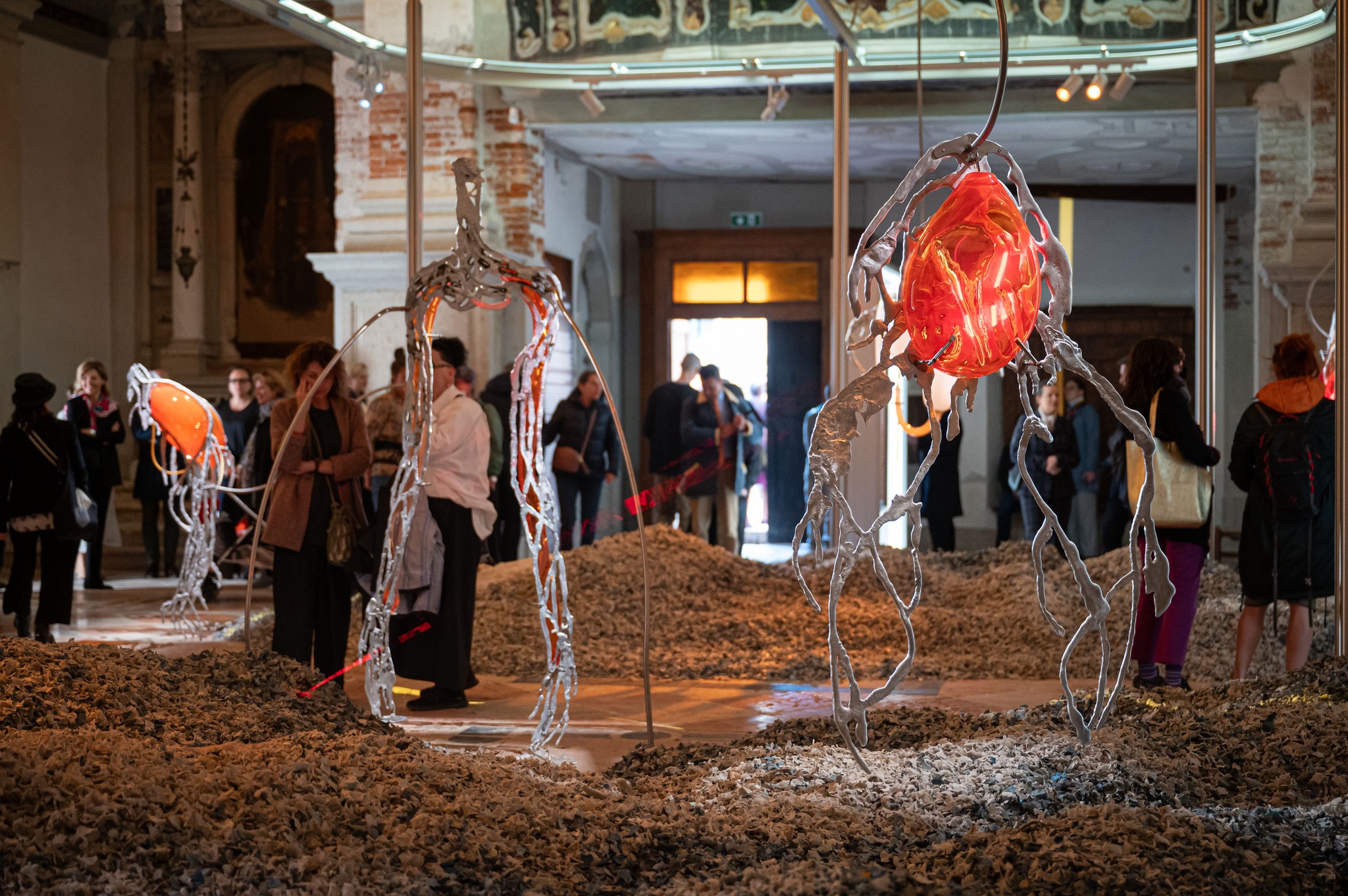 The official opening of the pavilion took place on April 19, with Lithuanian deputy minister of culture Daina Urbanavičienė and Lithuania’s ambassador to Italy Dalia Kreivienė in attendance.
The official opening of the pavilion took place on April 19, with Lithuanian deputy minister of culture Daina Urbanavičienė and Lithuania’s ambassador to Italy Dalia Kreivienė in attendance.
Also present were the Lithuanian ambassador to the Vatican Sigita Maslauskaitė-Mažylienė, Honorary Consul Alberto Franceschi, Lithuanian cultural attaché Laura Gabrielaitytė-Kazulėnienė, Lithuanian Culture Institute director Julija Reklaitė, along with Rožanskas family members, art critics, journalists partner and sponsor representatives.
 Visitors were introduced to the recently published catalogue “Marija Teresė Rožanskaitė: X-Rays of Art and Life“, compiled by Dr. Laima Kreivytė and Mykolas Piekuras, which will be launched on May 7 at the Vytautas Kasiulis Art Museum in Vilnius.
Visitors were introduced to the recently published catalogue “Marija Teresė Rožanskaitė: X-Rays of Art and Life“, compiled by Dr. Laima Kreivytė and Mykolas Piekuras, which will be launched on May 7 at the Vytautas Kasiulis Art Museum in Vilnius.
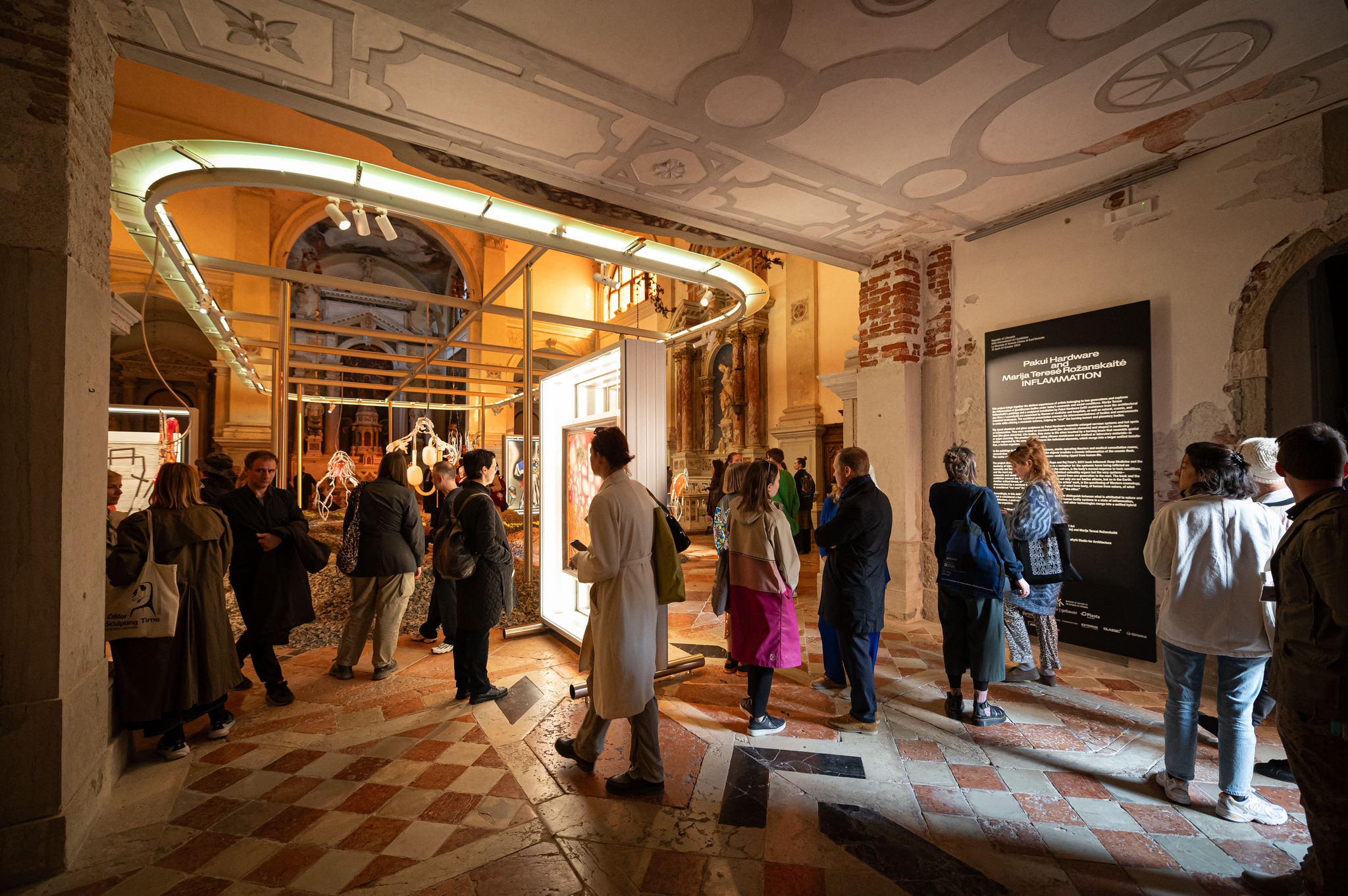 “Inflammation” is a blend of various art practices and experiences exploring how socio-economic issues engender inflammations in human and planetary bodies. The paintings by Rožanskaitė and the sculptural installation “Pakui Hardware“ combine themes of medicine and health, nature, the cosmos and industrial landscape.
“Inflammation” is a blend of various art practices and experiences exploring how socio-economic issues engender inflammations in human and planetary bodies. The paintings by Rožanskaitė and the sculptural installation “Pakui Hardware“ combine themes of medicine and health, nature, the cosmos and industrial landscape.
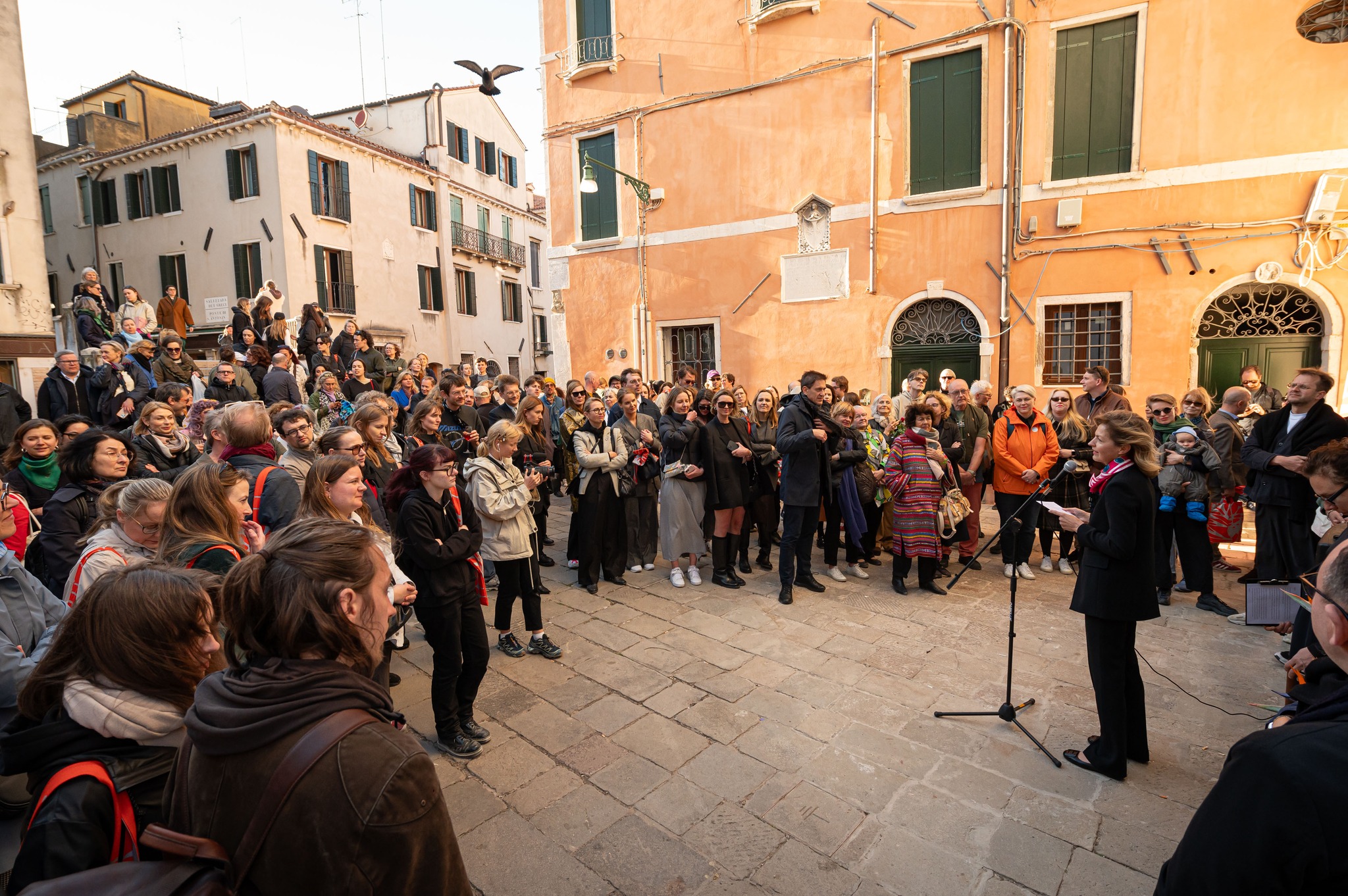 The Venice Biennale is the most prestigious contemporary art exhibition in the world, and has taken place every two years since 1895. The theme this year is Foreigners Everywhere (Lith. “Užsieniečiai visur“ or “Stranieri Ovunque“ in Italian). Biennale curator Adrano Pedroso’s intention was to showcase artists who are foreigners, immigrants, emigrants, exiles and refugees.
The Venice Biennale is the most prestigious contemporary art exhibition in the world, and has taken place every two years since 1895. The theme this year is Foreigners Everywhere (Lith. “Užsieniečiai visur“ or “Stranieri Ovunque“ in Italian). Biennale curator Adrano Pedroso’s intention was to showcase artists who are foreigners, immigrants, emigrants, exiles and refugees.
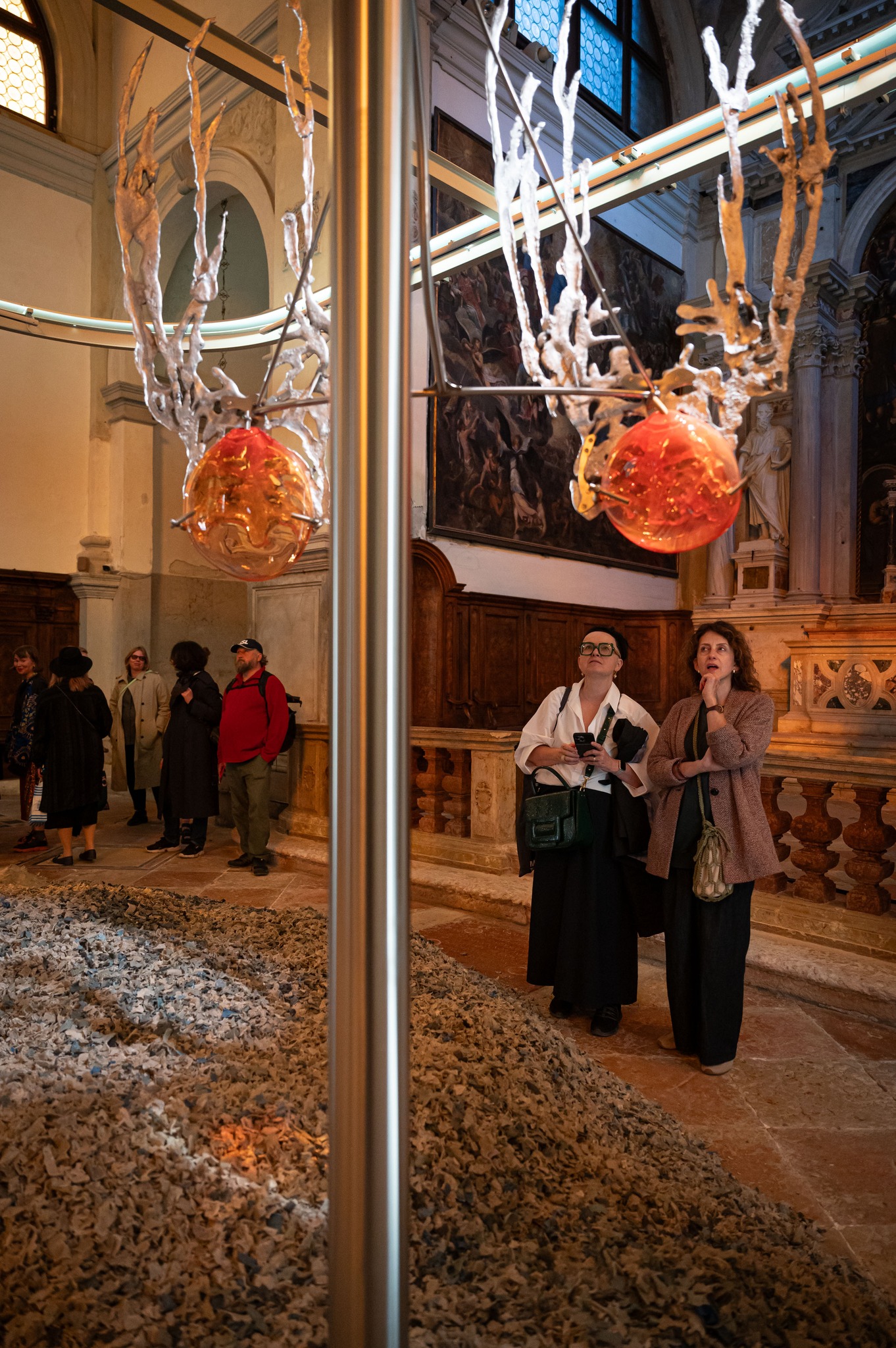 The Lithuanian pavilion is presented by the Lithuanian Ministry of Culture and financed by the Lithuanian Council of Culture. Photos by Gintarė Grigėnaitė.
The Lithuanian pavilion is presented by the Lithuanian Ministry of Culture and financed by the Lithuanian Council of Culture. Photos by Gintarė Grigėnaitė.
